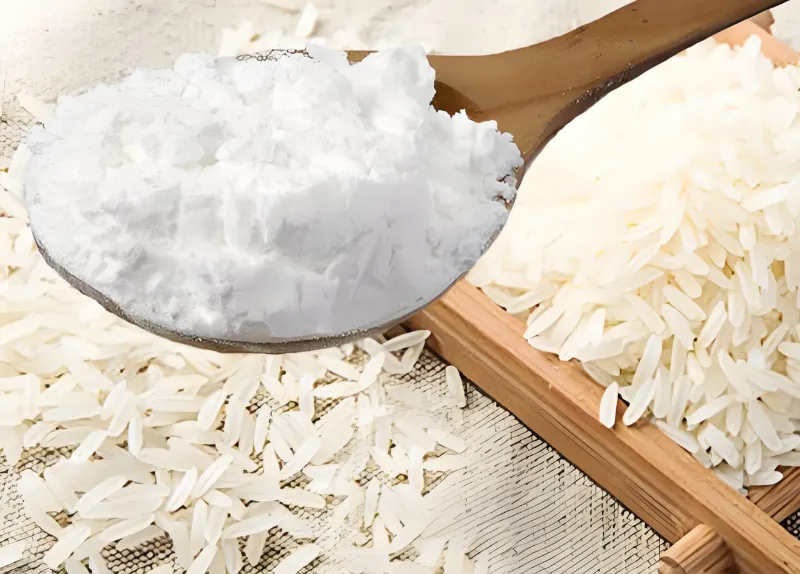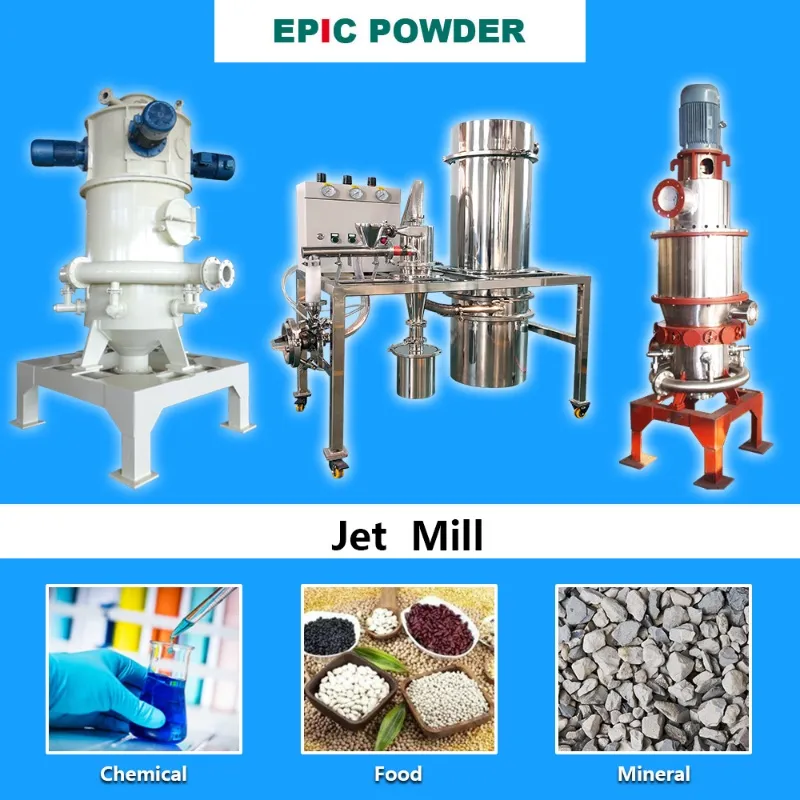Among all known grains, rice starch has the smallest particle size, with an average diameter of only 2-8 μm. In comparison, corn starch ranges from 5-25 μm, wheat starch from 2-45 μm, sorghum starch from 5-25 μm, and potato starch from 15-100 μm. The small particle size and high specific surface area of rice starch give it many superior physical and chemical properties compared to other starches. It can be used as a fat replacer, is easy to digest, low in lipids and minerals, and has very low protein allergenicity.

Additionally, rice starch is the whitest of all starches and can be used as a glossy coating for candies or tablets.
Researchers at the Institute of USA, have developed a resistant starch product based on rice, suitable for people with obesity and diabetes. After entering the colon, it promotes the growth of beneficial bacteria, improves the gut microbiota, and has special therapeutic effects for intestinal diseases.
Rice Starch Particle Structure and Composition
Starch molecules in rice exist in the form of starch granules. Among all known grain starches, rice starch granules are the smallest. Researchers have studied the particle size of 19 different rice starch varieties. The particle size ranges from 1.5 to 5.8 μm, and the shape is irregular, polygonal.
Generally, the size of rice powder granules varies significantly with the rice variety. For instance, glutinous rice starch granules are larger than indica rice starch, while japonica rice powder granules are the smallest.
Rice starch often exists in the form of compound starch granules, which are oval or spherical. Their diameter ranges from 7 to 39 μm, containing 20-60 smaller starch granules. Under electron microscope observation, the surface of compound rice powder granules shows many small holes. This is due to the tight binding of starch granules and protein bodies within the endosperm cells. These holes form when starch and protein separate.
Gelatinization Characteristics of Rice Starch
Whether in food or industrial applications, rice starch needs to be heated to gelatinize. Its gelatinization characteristics are closely related to its molecular and physicochemical structure.
When the starch slurry is heated to a certain temperature, the granules suddenly expand, and the crystalline structure disappears. Amylose begins to dissolve out of the starch granules, becoming a soluble substance. The cross of polarized light also disappears, and the starch slurry turns into a viscous paste. Even when stirring stops, it does not settle quickly. This series of changes is called starch gelatinization. Its essence is that high-energy heat and water transform the starch’s ordered structure into a disordered one.
Characteristics and Applications of Rice Starch
Characteristics
Rice starch granules are small, with a high specific surface area, which gives them strong adsorption capacity.
Rice powder is flavorless, so it can be used as an additive without affecting the taste of food.
Rice powder has a smooth, delicate texture similar to fat. It feels creamy and is easy to spread, making it an excellent raw material for fat substitutes.
The color of rice starch is the whitest among all starches, and it can be used as a glossy coating for tablets and candies. Waxy rice starch not only has fat-like properties but also has excellent freeze-thaw stability. It can prevent dehydration and shrinkage during the food processing freeze. Additionally, rice powder has low allergenic properties.
Applications

- Household powder and clothing sizing agent.
- Sauce and cooking thickener.
- Paper and photographic paper glazing.
- Candy coating and tablet excipient.
- Used as a fat substitute for frozen desserts and frozen dinner gravy.
- Used to produce various starch sugars.
- Used in cosmetics.
- Can be made into various types of modified starch.
Rice starch is mainly used as a thickener, filler, excipient and functional factor in the food industry and the pharmaceutical industry. Even if its usage ratio is very high, it will not affect the flavor of food or medicine. At the same time, rice powder can be used as a raw material, and various types of starch sugars can be directly produced by biotechnology. Such as glucose syrup, crystallized glucose, maltodextrin, maltose syrup, super high maltose, crystallized maltose, maltooligosaccharides and isomaltooligosaccharides. Rice starch can be directly used in various foods such as candy, biscuits, bread, jam, jelly, cold drinks, beverages, ice cream, sausages, ham, cakes, solid beverages, infant cakes, instant noodles, etc., making the food ingredient combination shift towards functionalization.

Preparation Method
Rice starch is tightly bound with rice proteins, making it difficult to separate them with simple water washing methods. Therefore, using rice alone as a raw material to extract rice powder is not economical. However, rice protein has high nutritional value and is a good plant-based protein that is very beneficial to the human body. Its amino acid composition is well-suited to human health needs. Extracting rice powder while making rice protein from rice is a good way to kill two birds with one stone.
In order to separate the tightly bound rice protein from the starch, the rice protein is dissolved, usually with alkali solution.
Soaking
First, place the rice in a soaking tank and add 0.3–0.5% sodium hydroxide (caustic soda) solution at a ratio of 5 times the amount of rice. Soak for 24 hours to soften the rice and extract the protein, usually at a temperature of 50°C. Afterward, drain the alkaline solution, rinse the rice once with clean water, and then add fresh alkaline solution for an additional 36–38 hours of soaking.
Grinding

After soaking, the rice absorbs water and swells. It can be crushed with the fingers. Use a stone mill or hammer mill to grind it into a slurry, continuously adding appropriate amounts of 0.3–0.5% sodium hydroxide solution during the grinding process.
Separation
The rice slurry is either allowed to settle or sent to a centrifuge for separation. The wet starch is then washed multiple times with clean water to remove impurities, followed by drying to obtain ultrafine rice powder.
Protein Recovery
The remaining sodium hydroxide soaking liquid is neutralized with acid or sulfur dioxide to the isoelectric point of the protein (pH 6.4). After dehydration and separation by centrifuge, the protein can be recovered.
This method is simple, with low processing costs. The proteins produced can often be used as animal feed components.
Epic Powder
Epic Powder specializes in providing advanced grinding equipment and solutions for various powder processing applications, including rice starch production. Our jet mills, air classifiers, and other grinding technologies are designed to efficiently separate and process rice starch and protein, ensuring high-quality output with minimal cost. By utilizing our cutting-edge machinery, businesses can optimize their production processes, enhancing product purity and consistency. Whether you’re working with superfine rice powder or other specialized powders, Epic Powder offers reliable and efficient solutions tailored to meet the unique needs of your industry.
